Masking fluid is such a helpful material when you’re creating a watercolor painting and you need to add bright details to a painting. It can also allow you to make a dark background with a lighter foreground. It is versatile and so easy to use. So today, you guessed it! I’m showing you how to use masking fluid and some tips that have helped me create my own projects.
Watch the How to Use Masking Fluid YouTube video here.
Materials Used:
This blog may use affiliate links when they’re available. If you choose to make a purchase through one of these links, I may receive a small commission at no cost to you. I don’t make recommendations lightly, and will only link to products I know and trust.
- Bright White Watercolor Paper – Kilimanjaro [Cheap Joes]
- Pebeo Drawing Gum [Blick]
- Grafix Incredible Nib [Blick] [Amazon]
- Speedball Standard Pen Holder [Blick]
- 513EF Standard Point Dip Pen Nib – Speedball [Blick]
- Golden Fleece Synthetic, Round, Size 4 [Cheap Joe’s]
- Faber-Castell Kneaded Eraser with Case [Blick] [Amazon]
- Pyrrol Orange 5 ml – Daniel Smith Extra Fine Watercolor [Blick]
- 2 jars of water
- An old washcloth
How to Use Masking Fluid:
Masking Fluid essentially allows you to keep a section of your watercolor paper clean and free of paint until you’re ready to remove the mask and apply the paint. I use the Pebo Drawing Gum because it’s very liquidy and it has a nice blue tint to it. This fluid flows onto the page so easily and it’s very easy to tell where you’ve applied it. I’ve used other fluids that were too thick (so it wouldn’t flow onto the paper easily), or it was white (so I couldn’t easily tell where I had placed it).
Tip: If your masking fluid is a thicker consistency, you can add water to the bottle to help it flow more easily. Note that this may reduce the shelf life of the fluid still in the bottle.
I use some simple tools to apply my masking fluid. The first tool I use is a handwriting nib. Normally, handwriting nibs are used for ink, but using it with masking fluid allows me to mask very small fine details. Such as making reflections in water landscapes. The second tool that I like using is my incredible nib. This is meant for specifically for masking fluid and has a rigid point that allows me to make medium-sized lines or thick lines depending on which side I use.
Lastly, I keep an old size 4 paintbrush that I use for more fluid shapes like applying fluid to flower petals or a sun. Regardless of the tools that you choose to use, make sure that you rinse them well when you’re done using them. Letting the fluid dry on your tools will ruin them.
Helpful tips when preparing to use masking fluid:
- Keep an old washcloth or rag handy, so you can wipe off your tools after you clean them with water.
- Masking fluid tends to work best with watercolor paper. I used Kilimanjaro 100% cotton cold press paper. If you have mixed media paper, you could probably use that, but it may not be as sturdy. Test your paper if you are unsure.
- Keep two cups of water handy. One for clean water and one for dirty. When it’s time to paint, avoid using your dirty masking fluid water. Get fresh water.
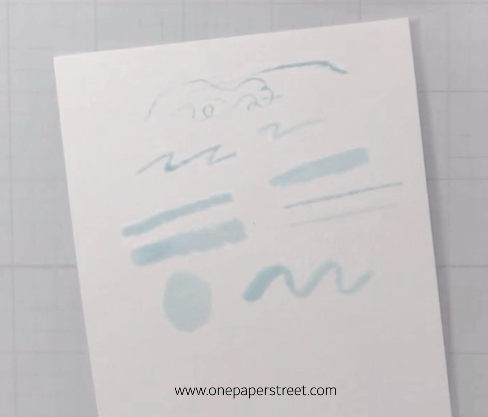
Applying the Masking Fluid:
When applying the masking fluid it’s important to dip your paintbrush or nib into your water before dipping it into the masking fluid. This allows you to have a little bit more time as you work without the fluid drying too quickly. Cover the intended area with the fluid and allow it to dry fully before you apply any more fluid to that section. Applying wet masking fluid on top of partially dry fluid can cause the partially dry section to peel up off of the paper.
When you’re done with the masking fluid, rinse off your brush or tool thoroughly. If there is any dry fluid already on your tool, pick it off gently But be careful not to damage the tool.
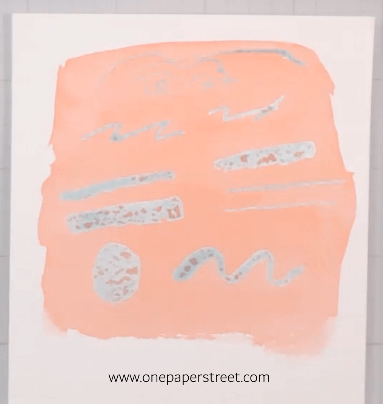
Removing Masking Fluid from Paper:
Apply any watercolor to the paper and watch the masked areas deter the paint. Once the paint has fully dried you can remove the masking fluid to reveal white paper underneath.
When removing the fluid use a kneadable eraser to gently pull the fluid away from the paper. Lightly swipe the eraser against the paper. You may see some paint residue on the eraser. That’s normal. But don’t press too firmly on the paper or you might pull off more paint than you intended.
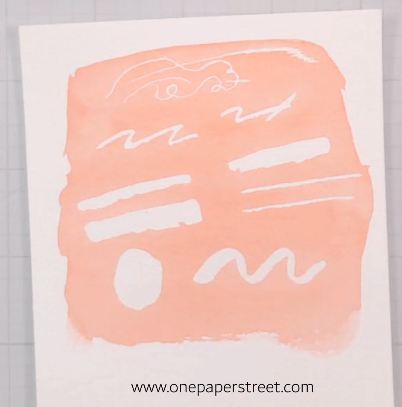
I hope this tutorial was helpful if you have questions about masking fluid please leave them in the comments below. I also wrote a post on how to make a limited paint palette. Check it out, and follow me on Instagram or Pinterest for the latest updates! You can also shop all the handmade cards that I’ve designed here.


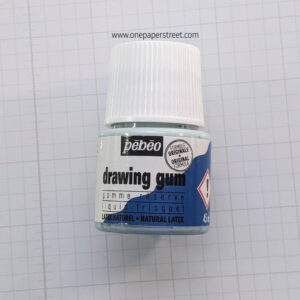
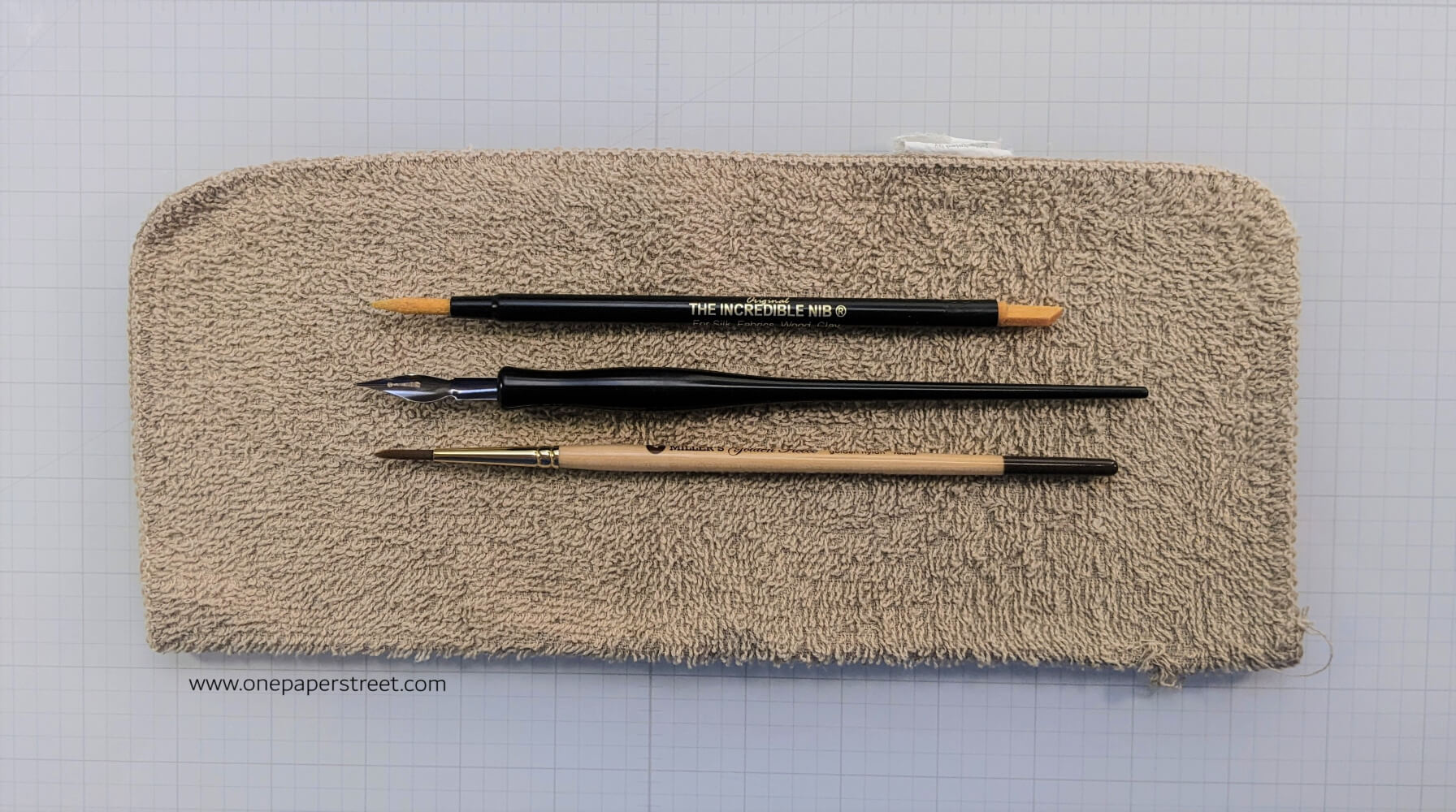
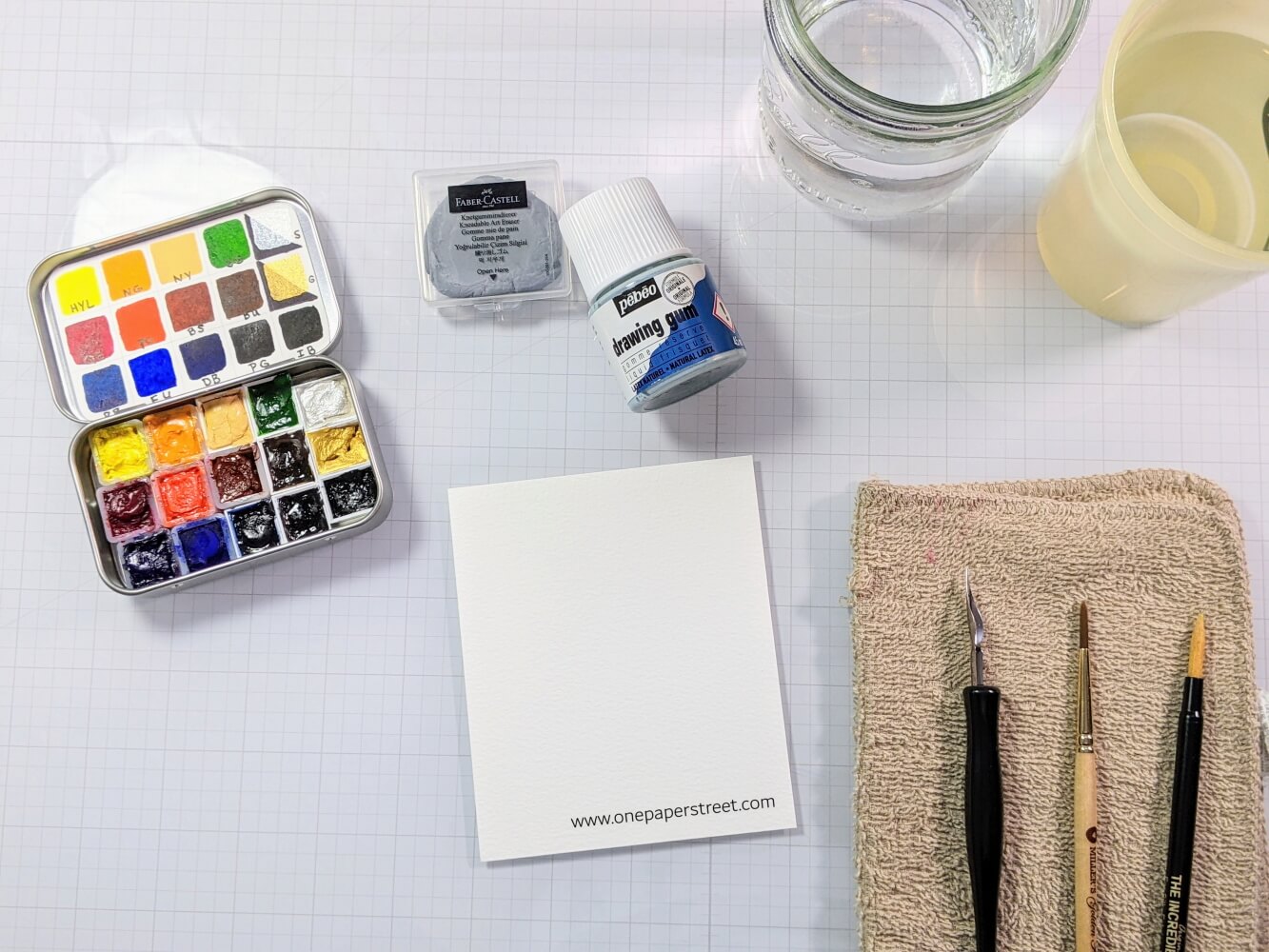
1 comment
Nice post.